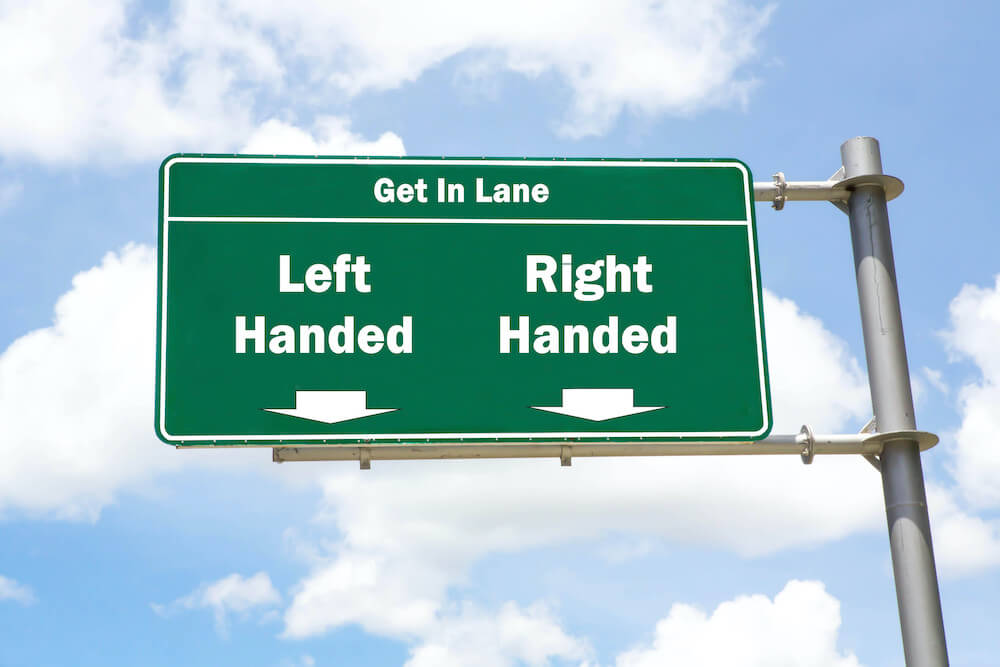Left or wrong: how and why left-handed people were discriminated
Everyone has a preferred hand: but for some, things are more complicated. Let’s look at how people treated the left-handed minority through the ages.

Intro: a gripping issue of a dominant hand
Among the many divisive differences in almost every human culture, there is handedness. Nearly every person on Earth has one hand that is stronger, faster, better in writing or drawing, and more capable of fine movements. In this case, we say that one hand is dominant.
Most people are right-handed—that is, their right hand is dominant. Only about 10–15 percent of us are lefties. Some people (less than 1%) have cross-dominance, switching their hand preference between different tasks, and even fewer are ambidextrous, with both hands equally able to do everything.
Through centuries, left-handed people have been the subject of prejudice (and sometimes praise). Popular beliefs about unique features of “the right” and “the left” influenced the scientific bias. For a long time, the explanations of why some people favor one hand over the other rested on baseless theories and myths.
Today, the media often write about left-handed presidents, actors, and writers. One may say that there is a common misconception about left-handed people being more talented, creative, and more imaginative than right-handed.
However, for the most part of history, we’ve been unfairly biased against those of us who are left-handed. And even now, left-handed people face some difficulties that others don’t.
Why are some people left-handed?
We have our preferred hand—right or left—coded in the genes. The preference begins to manifest at about 18 months and is fully shown by three. And the latest research indicates that we can know it even earlier: when a fetus tries to suck its left or right thumb in the mother’s womb.

However, it gets more complicated. Handedness is a complex thing, and it’s not localized in any one particular gene. Based on what we know so far, up to forty genes are responsible for developing the dominant hand. In the past, scientists (and urban myths) linked handedness to the dominant hemisphere of the brain. For example, there was a belief that while the majority of people have their language-related brain regions in the left hemisphere, left-handed people have it in the opposite hemisphere. And while some of us do have language centers towards the right, later studies show no direct connection with left-handedness.
The most recent scientific thought relates handedness to epigenetic markers: the combination of genes, environment, and behavior. Some suggest that these markers appear mainly in the spinal cord and not the brain.
There is an argument for the environment’s influence. For example, in some Asian countries, left-handed children are still being taught to use their right hand for writing. The practice to “switch” lefties to the “right” side was also common in European countries and the U.S. till the second half of the 20th century. It was also widespread in the USSR and the ex-USSR countries of the post-Soviet period.
Such practices have long-term consequences, unpleasant for the “converted” people. For example, when a left-handed child is forced to write with the right hand, they are more likely to develop stuttering. Experiments even demonstrated that switching “lefties” back to their natural hand could ease or cure their stuttering.
Left-handed myths
The mysterial fleur around left-handed people is based on the myths humanity nurtured through its history.
Left-handers were always there—archeological studies show that the proportion hasn’t changed since the Upper Paleolithic Age, 10 000 years ago.
However, in ancient times, most cultures considered the right hand the proper one. Ancient civilizations marked the right hand as a hand for good luck, useful deeds, and rationality. In Ancient Rome, the tradition of shaking hands (right hands, obviously) emerged to show good intentions (and no weapons ready).

The language of ancient Romans also contributed to the prejudice against the left-handed. The word “sinister” comes from a Latin root meaning “on the left side.” However, not only Latin is to blame here: the meaning of a simple “left-handed” is defined in the Merriam-Webster dictionary as, among others, “clumsy,” “awkward,” and “dubious.”
Medieval Christianity added much to the discrimination of the left-handers. People believed that the left hand belonged to the devil, as he baptized his trustees with his left hand. On the contrary, a good Christian would only use their right hand to make a cross sign. Back then, plenty of superstitions connected left-handed people with supposedly bringing bad luck.
The crusade continued with Cesare Lombroso, an Italian criminologist and physician, whose writings of the late 19th and early 20th century were very influential at the time. He claimed that left-handed people were more likely to become criminals or mentally ill. Later, some education psychologists claimed that left-handers were “stubborn” and “rigid,” advocating that every infant should use their right hand exclusively.
And while some 21st-century research does suggest that left-handed people tend to have a slightly lower life expectancy, it is unlikely that any health risks are related to their innate “left-handedness.”
